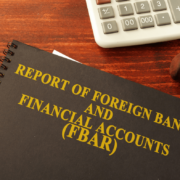Tax-Wise Ways to Take Cash From Your Corporation While Avoiding Dividend Treatment
- Learn how to withdraw cash from a corporation without dividend treatment.
- Understand how to utilize loans and fringe benefits.
- Analyze the 5 different ways to take cash from your company while avoiding dividend treatment.
Dividends paid out by a corporation are taxable to shareholders and can’t be deducted by the business. However, you may be able to get cash from your closely held corporation while avoiding dividend treatment.

If you want to withdraw cash from your closely held corporation at a low tax cost, distributing cash as a dividend is the easiest way. However, a dividend distribution isn’t tax efficient since it’s taxable to you to the extent of your corporation’s “earnings and profits,” but it’s not deductible by the corporation.
5 different approaches
Thankfully, some alternative methods may allow you to withdraw cash from a corporation while avoiding dividend treatment. Here are five possible options:
Salary
The business can deduct reasonable compensation that you or your family members receive for services rendered to the corporation. However, it’s also taxable to the recipient(s). The same rule applies to any compensation (in the form of rent) that you receive from the corporation for the use of property. In either case, the corporation must deem the compensation reasonable for the services or property provided. Excessive amounts are nondeductible and treated as corporate distributions.
Fringe benefits
Consider obtaining the equivalent of a cash withdrawal in fringe benefits that are deductible by the corporation and not taxable to you. Examples are life insurance, certain medical benefits, disability insurance, and dependent care. These benefits remain tax-free only when the corporation provides them on a nondiscriminatory basis to all employees. You can also establish a salary reduction plan that allows you (and other employees) to take a portion of your compensation as nontaxable benefits, rather than as taxable compensation.
Capital repayments
To the extent you’ve capitalized the corporation with debt, the corporation can repay it without dividend treatment. The corporation can deduct interest paid on the debt when it has properly documented the debt with appropriate terms characterizing it as such. The corporation must not have an excessively high debt-to-equity ratio. Otherwise, the “debt” repayment may be taxed as a dividend. If you make future cash contributions, consider structuring them as debt. This facilitates later withdrawals on a tax-advantaged basis.
Loans
You can withdraw cash from the corporation tax-free by borrowing money from it. However, document the loan properly in a loan agreement or note to avoid characterization as a corporate distribution. Ensure the terms are comparable to those an unrelated third party would offer, including provisions for interest and principal. Make all interest and principal payments as required under the loan terms. Additionally, consider the effect of the corporation’s receipt of interest income.
Property sales
You can withdraw cash from the corporation and avoid dividend treatment by selling property to it. However, we should avoid certain sales. For example, you shouldn’t sell property to a more than 50% owned corporation at a loss, since the loss will be disallowed. Avoid selling depreciable property to a corporation you own more than 50% of at a gain, as the gain will be treated as ordinary income rather than capital gain. A sale should be on terms that are comparable to those on which an unrelated third party would purchase the property. You may need to obtain an independent appraisal to establish the property’s value.
If you’re interested in discussing any of these ideas, contact us. Schedule a consultation with a Fiducial advisor at https://fiducial.com/consultations.
Know someone who might need our services? We love referrals!









